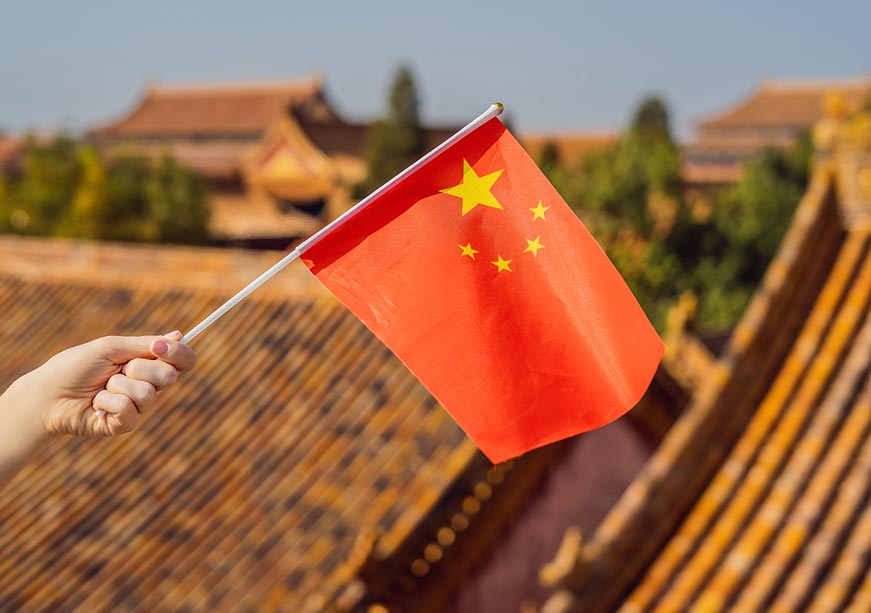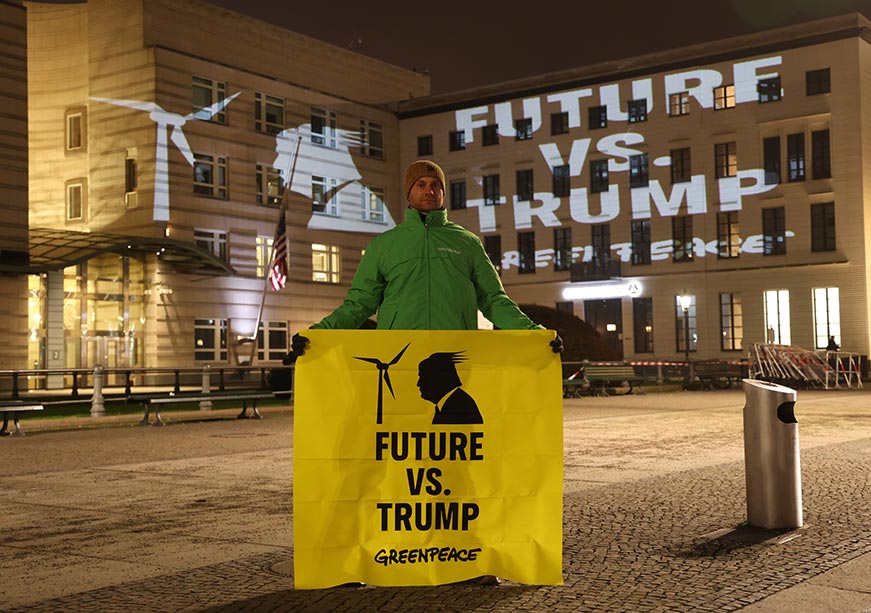
Image Source: Getty
U.S. Defense Secretary Pete Hegseth and Minister of Defense of Japan Gen Nakatani shake hands at the Ministry of Defense on March 30, 2025 in Tokyo, Japan.
Washington’s ties with the Philippines and Japan are critical pillars of its Indo-Pacific strategy in two key ways—countering China's assertiveness and ensuring regional stability. The United States-Indo-Pacific Command (US-INDOPACOM) plays a major role in operationalising these partnerships through military cooperation, joint exercises, and strategic deployments.
Prima facie, Trump’s unpredictable foreign policy decisions are perceived as straining traditional alliances and creating global uncertainty, leading to apprehensions about the reduced US engagement in global security. His second term as President begins amid protracted crises in Ukraine and Gaza, alongside uncertainties about his plans to downsize defence and other diplomatic engagements. This has fuelled speculation about the continuity of US commitments in the Indo-Pacific, amid rising geopolitical tensions, especially with China.
Covering the US-INDOPACOM in Hawaii, the Philippines, and Japan, required clear strategic commitments to strengthen the existing partnership with concrete measures to boost deterrence capabilities in response to evolving security dynamics, essential in solidifying long-term cooperation.
Pete Hegseth’s first official tour as the US Secretary of Defence to the Indo-Pacific region, therefore, needed much more than a symbolic reaffirmation of ties. This trip, covering the US-INDOPACOM in Hawaii, the Philippines, and Japan, required clear strategic commitments to strengthen the existing partnership with concrete measures to boost deterrence capabilities in response to evolving security dynamics, essential in solidifying long-term cooperation. Thus, Hegseth's engagements centred on three core tenets: enhancing defence readiness and modernisation, expanding defence-industrial support, and reestablishing deterrence.
Key Takeaways from Manila
In Manila, Hegseth announced plans for prioritising defence-industrial cooperation, including discussions on co-producing unmanned systems and enhancing logistics support. As the Philippines modernises its military, US assistance will be instrumental in enhancing its maritime domain awareness and coastal defence capabilities. The US announced the deployment of the Navy-Marine Expeditionary Ship Interdiction System (NMESIS), a ground-based anti-ship missile system, as part of the upcoming Balikatan Exercises. Additionally, the US special operations forces will train alongside Philippine Marines in the Batanes Islands, just 120 miles south of Taiwan— an increasingly critical flashpoint in US-China tensions. Balikatan 2025 is expected to be one of the most intensive editions in the exercise’s 40-year history, featuring a comprehensive battle simulation across the Philippine archipelago, including both Philippine territory and the South China Sea.
The US announced the deployment of the Navy-Marine Expeditionary Ship Interdiction System (NMESIS), a ground-based anti-ship missile system, as part of the upcoming Balikatan Exercises.
The Marcos administration aims to further strengthen its deepening alliance with the US, particularly as the Philippines faces repeated and escalatory Chinese aggression in the South China Sea. The Philippines' Defence Secretary Gilberto Teodoro Jr. emphasised that the threat extends beyond national security, citing China’s overreach as a broader regional concern. Extending the ambit of the Mutual Defence Treaty (MDT)and strengthening the Enhanced Defence Cooperation Agreement (EDCA) that seeks to grant the US troops access to Philippine military bases has enabled the US to deploy forces and pre-position military assets in key locations, especially near Taiwan and the South China Sea.
Key Takeaways from Tokyo
Secretary Hegseth met with the Japanese Defence Minister Gen Nakatani, emphasising Japan's critical role as an indispensable partner in the Indo-Pacific. Currently, approximately 54,000 US military personnel in Japan report to the Indo-Pacific Command in Hawaii. However, under an agreement reached in 2024 between then-President Joe Biden and then-Prime Minister (PM) Fumio Kishida, both nations are planning to upgrade this structure with a new Japan-based headquarters. The proposed expansion aims to convert the United States Forces Japan (USFJ) into a joint force headquarters, enhancing the US military's ability to respond swiftly to regional contingencies. Announcing that phase one of this shift is already underway, Hegseth stated the plans to upgrade the US military command in Japan to a ‘war-fighting’ headquarters. The two countries have also agreed to fast-track plans for the joint production of beyond-visual-range AMRAAM air-to-air missiles and explore collaboration on producing SM-6 surface-to-air defence missiles to help address munitions shortages. Discussions also focused on the possibility of greater US access to Japan’s southwestern islands along the East China Sea.
The proposed expansion aims to convert the United States Forces Japan (USFJ) into a joint force headquarters, enhancing the US military's ability to respond swiftly to regional contingencies.
Under former Prime Ministers Shinzo Abe and Fumio Kishida, Japan has undertaken significant security reforms. These align with the US’ strategic goals, including investments in counterstrike capabilities, long-range missiles, and the development of a more flexible, combat-ready Self-Defence Force. In response to rising tensions, particularly in the Taiwan Strait, Washington and Tokyo are strengthening military integration.
The Role of INDOPACOM in Regional Security
Before his first stop in Manila, Hegseth visited the INDOPACOM, from 24–26 March 2025, and received comprehensive briefings on regional security dynamics and the status of US alliances and partnerships. He engaged with service members across various branches—Army, Navy, Air Force, Marine Corps, and Space Force—emphasising the importance of operational readiness. As the largest and most strategically significant of the US military’s unified combatant commands, INDOPACOM oversees the US military operations across the Indo-Pacific, including coordination with allies such as Japan and the Philippines. One of its key initiatives is strengthening integrated deterrence, which involves working closely with partners to ensure that any potential adversary, particularly China, faces a complex and costly response if it engages in aggressive actions.
As the largest and most strategically significant of the US military’s unified combatant commands, INDOPACOM oversees the US military operations across the Indo-Pacific, including coordination with allies such as Japan and the Philippines.
While the Philippines provides a critical foothold in the South China Sea, Japan serves as a linchpin for US military operations in Northeast Asia and also the wider Indo-Pacific. The INDOPACOM plays a pivotal role in ensuring these alliances translate into actionable deterrence against regional threats. As security challenges in the Indo-Pacific intensify, Washington’s partnerships with Manila and Tokyo will continue to deepen, shaping the future of regional stability. Hegseth’s statement that “...‘America First’ does not mean America alone” reflects a nuanced articulation of Trump’s ‘America First’ policy, suggesting that while the US prioritises its own interests, it remains engaged in global security affairs. The statement acknowledges the concerns among partner countries who, during Trump’s tenure, fear a reduction in US commitments to multilateral defence arrangements.
Pratnashree Basu is an Associate Fellow with the Observer Research Foundation.
The views expressed above belong to the author(s). ORF research and analyses now available on Telegram! Click here to access our curated content — blogs, longforms and interviews.




 PREV
PREV


